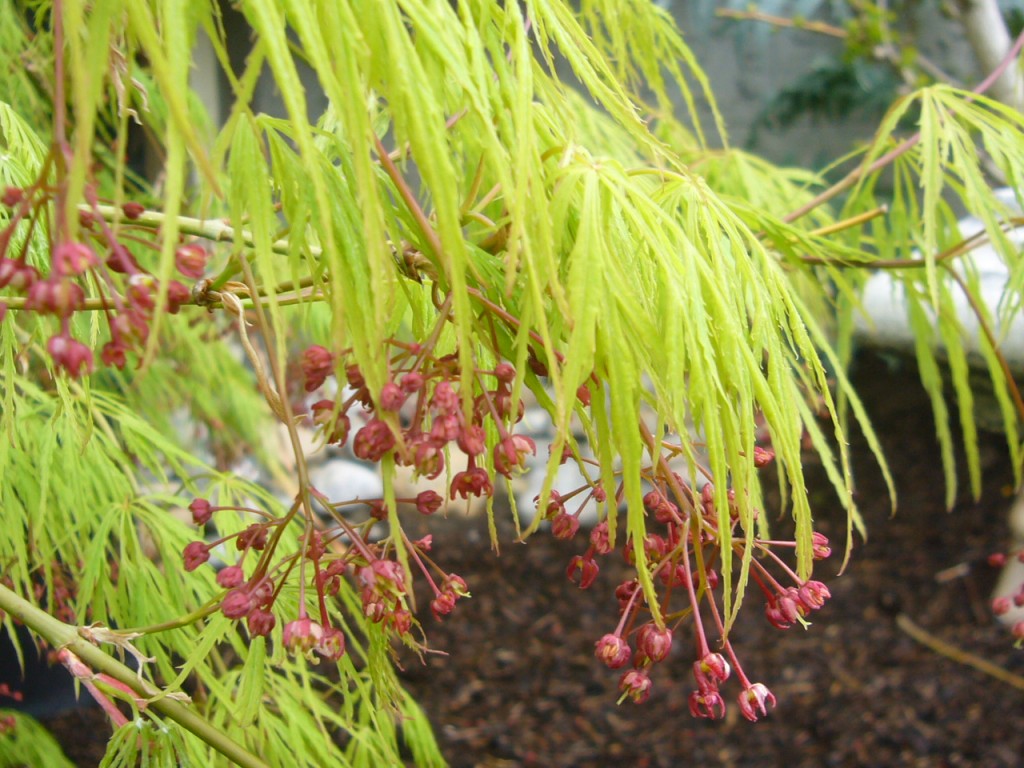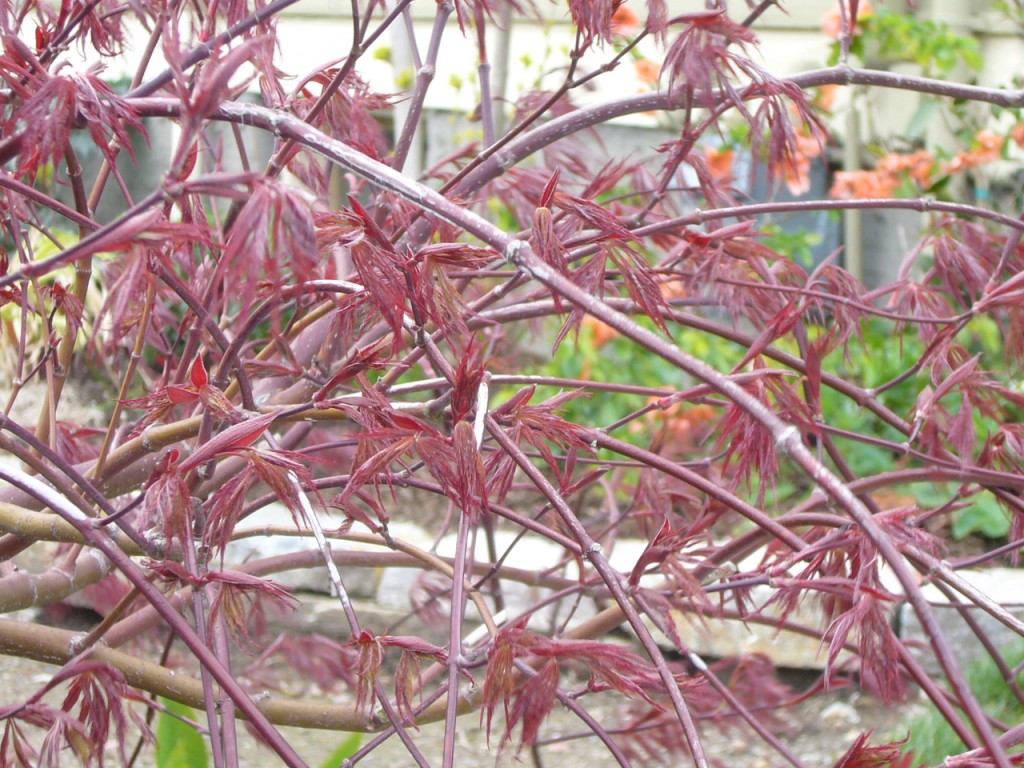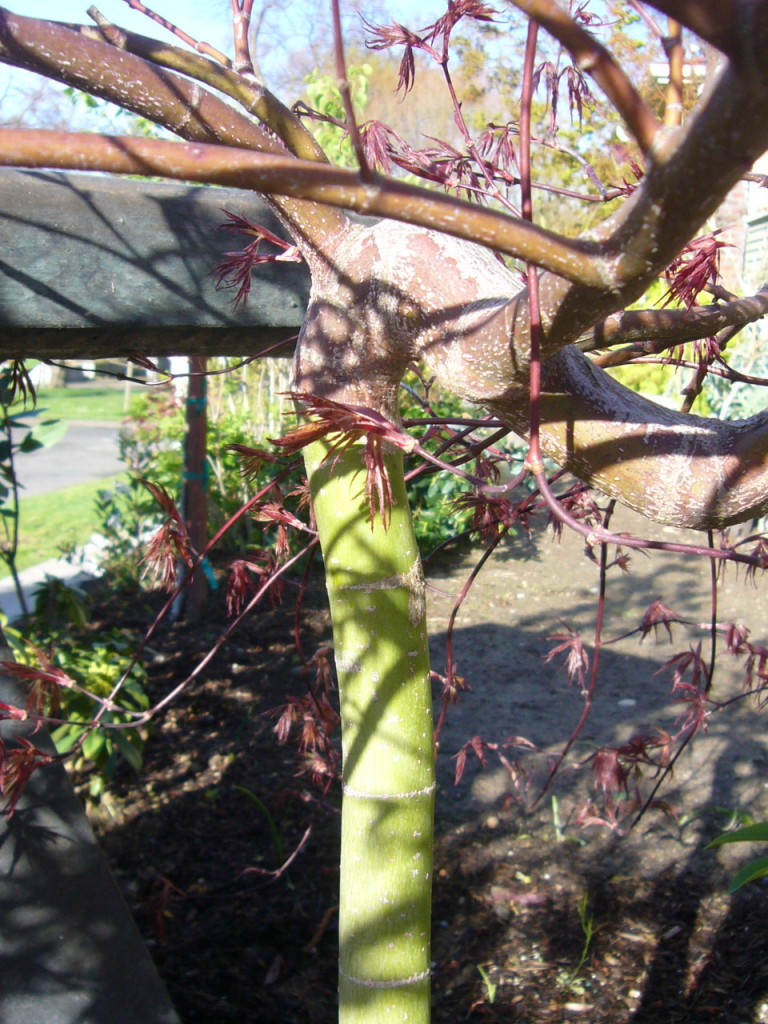Japanese Laceleaf Maple
Japanese maples are a common sight in the yards and gardens of the Pacific Northwest because they are such a dynamic addition to the landscape. Japanese maples transform their colors and aspect with the season. In winter the bare branches add a sculptural element to the garden. If you are good at pruning them so much the better.
When the leaves burst forth in the spring they will be a bright green, or a shade of red. The blooms and seeds they produce remind me of jewelry on a beautiful woman. In the summer the foliage darkens somewhat and creates lacy patterns of sunlight on the flower beds and on the interior walls of your home. No matter whether the maple is green or red, you can expect it to change its color in the fall. The tones will range from yellow to orange to red, or some combination of these, often on a single leaf!
There are far too many varieties of Japanese maple to list them all here, but a favorite of mine is the Japanese Laceleaf Maple or Acer palmatum “Dissectum”. The laceleafs mostly have a weeping aspect, and they come in shades of green or red. These slow growing trees will reach a height of 1-2 feet by the time they are two years old. They rarely grow higher than 6 feet but can be up to 10 feet wide. Since laceleaf maples grow slowly it is easy to keep up with the pruning and they maintain their shaping well. If badly pruned they will take quite awhile to recover, again due to the slow growth.
I have had luck growing 2 trees in the Japanese laceleaf maple family: the “Viridis” (green) and the “Red Dragon”. As you can see in the picture the Viridis is in bloom right now. The Red Dragon that I have has never shown blooms. I know it cannot be properly grown from seed so it is propagated by means of grafting a cutting onto Acer palmatum (Japanese Maple) rootstock. The graft can be made low or high, which will affect the height and aspect of the tree.
While it’s true that Japanese laceleaf maples can be expensive (especially if they have been pruned properly and have that airy, open interior), they provide year round interest for your garden for years and years to come. Why not think of it as dividing the price by the number of days you will be living in your house, and enjoying your garden? That’s not too expensive, right?


